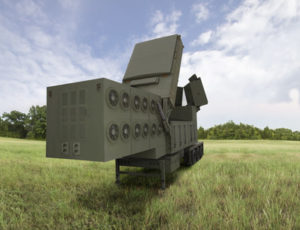The Army has selected Raytheon [RTN] to deliver the next-generation Lower Tier Air and Missile Defense Sensor to replace the Patriot defense system’s current radar, the company said on Thursday.
Raytheon, which builds Patriot and its current radar, beat out
Northrop Grumman [NOC] and Lockheed Martin [LMT] for LTAMDS, receiving an initial deal worth upward of $384 million to deliver six production representative systems.

“Our clean-sheet approach to LTAMDS reinforces Raytheon’s position as the world’s premier air and missile defense radar capability provider,” Ralph Acaba, president of Raytheon Integrated Defense Systems, said in a statement. “With the U.S. Army’s approval, these Patriot partners will have the opportunity to add Active Electronic Scanned Array, 360-degree capability to their inventory, extending the life of their systems for many decades.”
Brig. Gen. Brian Gibson, director of the Army’s Air and Missile Defense cross-functional team, told reporters earlier in the week this contract announcement was imminent as the service looks to synchronize LTAMDS production with the fielding of the future IBCS air and missile defense command system, set to roll out in 2022 (Defense Daily, Oct. 15).
The Army has made several adjustments to the LTAMDS competition over time, including downselecting Raytheon and Lockheed Martin last October to move into the technology maturation and risk reduction phase before changing course to hold a “sense-off” demonstration to test an array of options.
Raytheon, Lockheed Martin and Northrop Grumman all participated in the “sense-off” at White Sands Missile Range in New Mexico earlier this year.
Following the test for the Army, Raytheon said its demonstration “included tracking threat-representative targets to showcase the system’s mission capabilities and validate maturity of the system design” (Defense Daily, May 21).
The company’s LTAMDS radar is a 360-degree, Active Electronically Scanned Array capability that is powered by Gallium Nitride technology Raytheon has been developing over the last 20 years.
“For decades, we have invested in radar technology to address our customer’s most pressing needs. As a result, we’ve developed the ability and capacity to provide the Army an advanced capability on an accelerated timeline,” Tom Laliberty, Raytheon’s vice president of integrated air and missile defense, said in a statement.
Army officials have previously said they plan to receive the six prototype LTAMDS radars by September 2022, and then award a follow-on production contract for 16 more radars (Defense Daily, May 16).
Analysts from Jefferies have evaluated that the LTAMDS program could be worth around $5 billion through 2030.